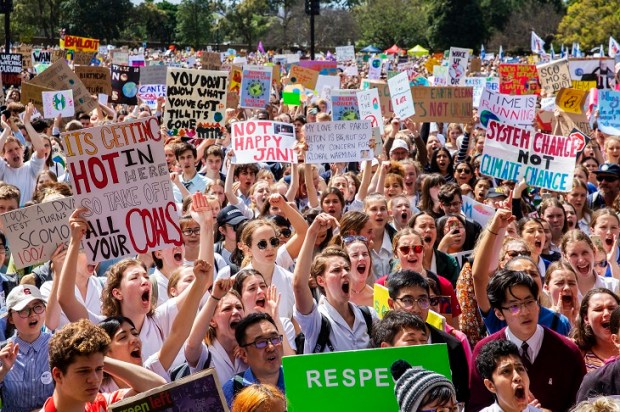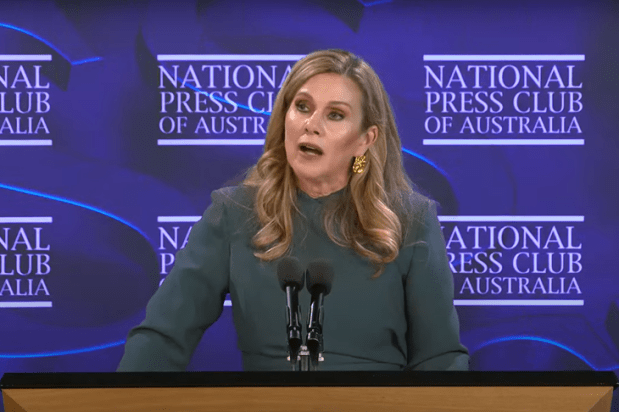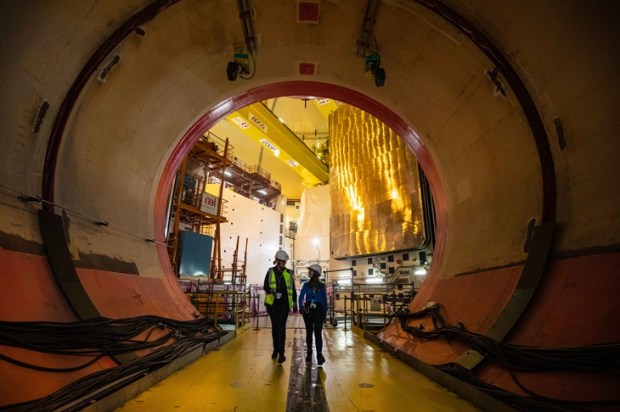Populism has been defined as an approach to politics that pits a champion of the commonfolk against elites. Right-wing populism has often been regarded as anti-expert, anti-intellectual, and anti-globalisation. A major challenge for populist leaders has been a lack of vision. In the short term, populist leaders can be against things, but this it makes it harder to be for something in the long run.
While Reform UK has shown the way, the Liberal Party has gone astray. It’s time for a Reform Australia Party.
Reform UK came to the fore during the Brexit debate. At the time, it seemed to me that Brexit was a mistake. Global capitalism was a good thing in my book. But the EU wasn’t about global capitalism, it was about modern communism perpetuated by Woke idealism. In hindsight, Nigel Farage was ahead of the game. He now stands for something – a truly united United Kingdom, one that is not afraid of its history, its power, its glory, or even its own shadow.
Australia’s political landscape, dominated by the Labor Party and the Liberal-National Coalition, has long been a stable yet occasionally stagnant two-party system. However, as voter disillusionment grows over issues like immigration, economic pressures, and cultural shifts, the emergence of a right-wing populist party akin to the UK’s Reform UK seems plausible.
Reform UK, with its bold policies and anti-establishment rhetoric, has disrupted British politics, securing 14.3 per cent of the vote in the 2024 general election. There is now speculation that Reform UK will replace the Tories, a conservative party in name only.
Australia, always a few years behind the rest of the West, has ignored the lessons of the US and the UK, which have manifested in President Trump’s ‘new’ Republicans and Farage’s reformist conservatives. Instead, the Coalition has refused to cross the Rubicon and gone Labor-lite, or Liberal in name only (LINO).
I predict this will happen within a few years, likely following the collapse of Sir Keir Starmer’s government and the rise of Reform UK. The continued success of the ‘new’ Republicans under JD Vance in 2028 will also contribute. By then, the Liberal Party will be relegated to the dustbin of history, and Australia will have its conservative reform moment.
This raises the question: What would a Reform Australia Party look like, and who might lead it?
Reform UK’s flagship policy is a ‘net-zero immigration’ approach, freezing non-essential immigration, exiting the European Convention on Human Rights (ECHR), and implementing measures like returning migrants to France. In Australia, immigration remains a contentious issue, with debates over skilled migration, family reunions, and asylum seekers. A Reform Australia Party might propose a strict cap on immigration, prioritising skilled migrants who meet stringent economic and cultural criteria. It could advocate for reinforcing offshore processing centres, such as those on Nauru or Manus Island, or even stricter measures such as revising Australia’s commitments to international refugee conventions to prioritise national sovereignty. Such policies would resonate with voters concerned about job competition and cultural cohesion, particularly in regional areas, and with city folk who are sick of seeing Palestinian and now Iranian flags everywhere.
Reform UK’s economic agenda includes significant tax cuts, such as raising the income tax threshold to £20,000, exempting 7 million people, and introducing the Britannia Card to redistribute wealth from ‘non-doms’ to low-paid workers. We’ve seen the same phenomenon in Australia, with Menzies’ forgotten people (the middle class) now left behind along with Labor’s forgotten people (the working class).
In Australia, an equivalent party might propose increasing the tax-free threshold to $30,000, providing relief to low and middle-income earners, and reducing corporate tax rates to stimulate small businesses and attract investment. Increasing and broadening the GST in exchange for removing other taxes and lowering income taxes could also feature, addressing concerns about sustainable revenue.
These policies would aim to counter perceptions of economic stagnation under Labor and Liberal governments and the Uniparty’s desire to increase taxes to pay for increased government spending.
Reform UK’s rejection of Net Zero carbon targets, advocating for increased oil and gas drilling and nationalising energy companies, reflects a prioritisation of economic growth over environmental commitments. Australia, with its significant coal and gas industries, faces similar tensions. A Reform Australia Party might oppose the 2050 Net Zero goal, arguing it threatens jobs in mining regions like Queensland and Western Australia.
Instead, it could promote ‘clean coal’ technologies, expanded gas exploration to ensure energy security, appealing to regional voters and industries. This stance would contrast with the Labor government’s renewable energy push and the Liberal’s mixed strategy, potentially alienating urban environmentalists but gaining traction in resource-heavy states. The economic impact of such policies could be significant, given mining’s contribution to Australia’s GDP.
A Reform Australia Party could also engage properly with unions to enable a smooth transition to new essential industries. Converting coal-fired energy to nuclear energy, for example, would enable heavy industries to access cheap, reliable, and clean sources of energy without all the cost blowouts and property dramas. It would also help with skills transfers from coal to nuclear. In my opinion, artificial intelligence means the nuclear problem won’t go away even if we increase the use of coal-fired power stations. Bringing the unions in will neutralise both Labor and the Coalition and ensure we don’t need to import skills we don’t have while utilising those we do.
Australia’s Medicare system faces challenges with wait times and funding. Reform UK proposes a French-style insurance-based healthcare system and vouchers for private care to reduce NHS waiting lists. A Reform Australia Party might advocate for greater private sector involvement, such as tax incentives for private health insurance or co-payments for non-emergency Medicare services. Vouchers for private care could be proposed to address hospital overcrowding, as the Medicare system is hardly the single-card service Prime Minister Albanese repeatedly promises.
Reform UK’s education policies include a ‘patriotic’ curriculum, banning critical race theory, and restricting transgender ideology in schools. In Australia, an equivalent party might push for curricula emphasising national achievements, such as the Anzac legacy or colonial history, while opposing teachings perceived as ‘Woke’, like critical race theory or gender fluidity. Vocational training and apprenticeships could also be prioritised to address skills shortages, aligning with economic goals.
Reform UK’s call to abolish the BBC TV licence fee stems from perceptions of institutional bias. In Australia, the ABC faces similar criticisms from conservative groups. A Reform Australia Party might propose reducing ABC funding or transitioning it to a subscription model, arguing it would ensure impartiality and reduce taxpayer burden. Recent revelations about the ABC’s biased ‘diversity’ reporting indicates it has followed the BBC’s race to the bottom and conservatives would welcome diminished power of the ABC’s support for Woke agendas.
Reform UK emphasises sovereignty, rejecting globalist frameworks like the World Economic Forum. In Australia, a Reform Party might take a protectionist stance, advocating for reduced foreign influence, particularly from powers like China, and supporting local industries while following the United States out of the increasingly ludicrous positions adopted by the UN.
Leading a Reform Australia Party would require a figure capable of uniting populist sentiments and challenging the major parties. Several candidates stand out.
Matt Canavan has consistently echoed a number of Reform policies, as has Alex Antic. Either Canavan or Antic would be well-received by conservatives, but it remains to be seen whether they could carry off the transition to a new party. Several other well-meaning ex-Liberals have tried and failed in this regard.
As One Nation’s leader, Pauline Hanson’s anti-immigration and nationalist views align closely with Reform UK’s ethos. Her established base and media profile could drive a new party, though the party is currently named ‘Pauline Hanson’s One Nation’ which may limit the broader appeal of the party. One Nation’s recent move to a branch structure may facilitate the rise of a grassroots champion, but the efficacy of this new approach to the party’s governance remains untested.
The ideal would be to see an amalgamation of existing non-Woke conservative groups to create a new amalgamation in the same vein as Sir Robert Menzies’ party.
Initially, proportional representation in the Senate offers opportunities, as evidenced by One Nation’s four senators. A Reform Australia Party could capitalise on voter frustration with issues like cost-of-living pressures, perceived government overreach, and cultural shifts. Recent X posts also indicate growing dissatisfaction with the Coalition and growing interest in right-wing populist movements.
A Reform Australia Party, inspired by Reform UK, would likely champion strict immigration controls, tax cuts, scepticism toward climate goals, and private sector solutions in healthcare and education. It would position itself as an anti-establishment force, appealing to voters disillusioned with Labor and the Liberals. Leaders like Matt Canavan, Alex Antic, and Pauline Hanson, or emerging grassroots figures could drive its agenda, leveraging populist rhetoric to challenge the status quo.
God knows we can’t afford to carry on as we are now.
Dr Michael de Percy @FlaneurPolitiq is the Spectator Australia’s Canberra Press Gallery Correspondent. If you would like to support his writing, or read more of Michael, please visit his website.


























